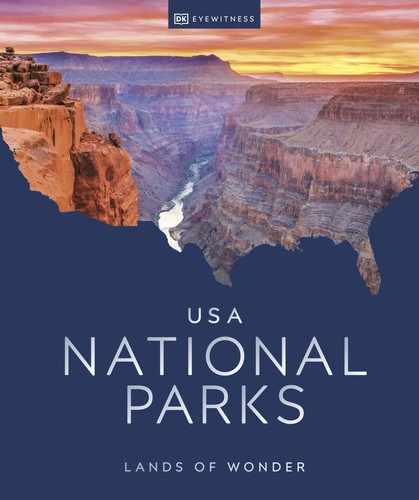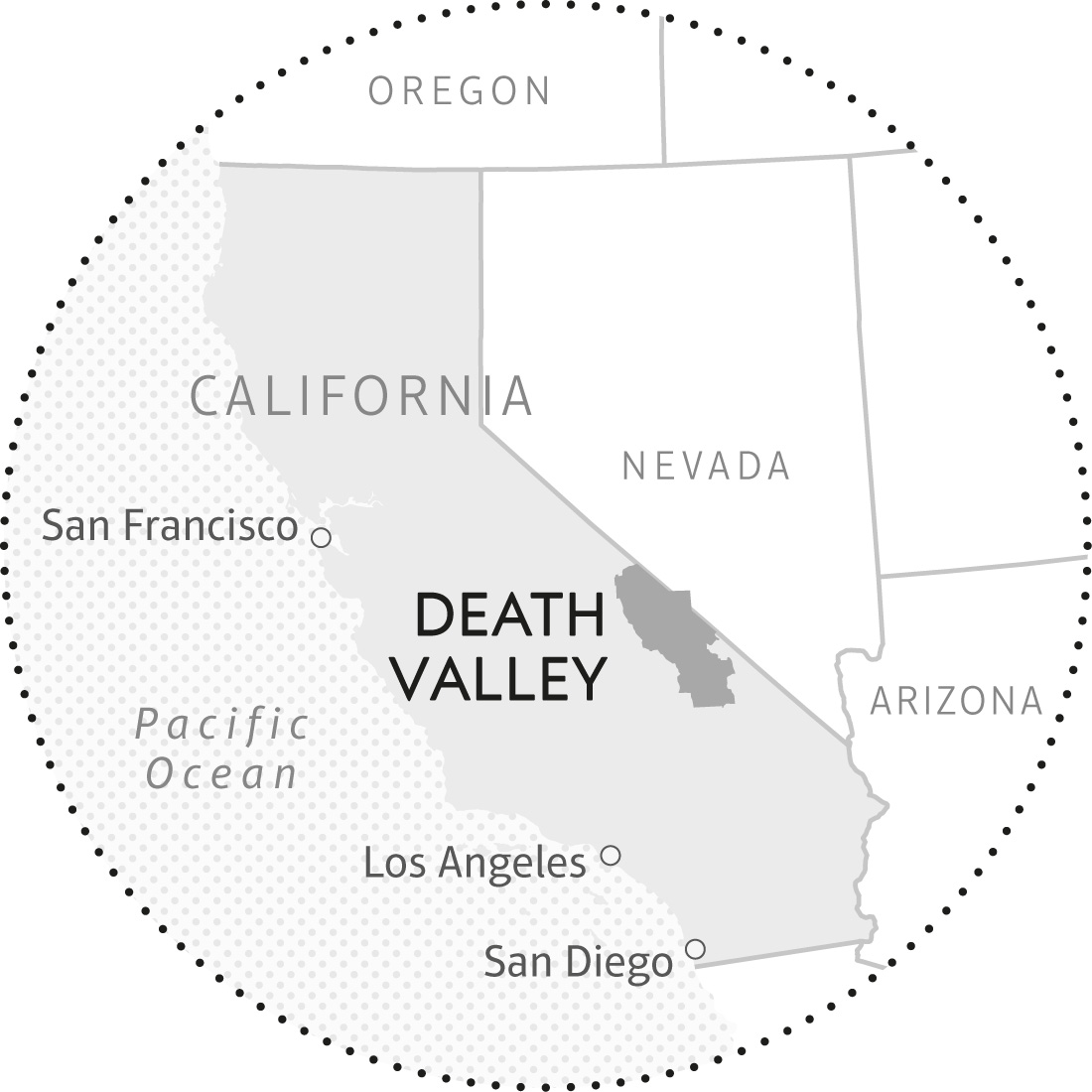
California • Nevada
DEATH VALLEY
ESTABLISHED 1994
Hottest, driest, lowest—Death Valley earns a stream of superlatives. Yet none fully captures the geologic drama, radiant textures, and soothing solitude found amid this scenic swath of the untamed West.
Death Valley is as far removed from everyday life as most of us can get. This feels like the edge of the world, where the terrain is scraped to the bone, the sun snarls like a beast, and silence wraps around everything and holds on tight.
Dazzling salt flats stretch to the flanks of cloud-spearing mountains. Twisting canyons, colorful badlands, and silken sand dunes interrupt the expanse. And dotting the backcountry are the sun-bleached ruins of nearly forgotten boomtowns.
Yet beneath the stark exterior beats a vibrant heart. The most hauntingly named national park proves to be a remarkably diverse landscape, bristling with life. Death Valley supports more than 400 animal species and 1,000 types of plant—some, like the Panamint monkeyflower and Devils Hole pupfish, exist nowhere else.
A few paved roads slice across the land, connecting aptly named highlights such as Badwater Basin and Devil’s Golf Course, making Death Valley surprisingly accessible to all. The largest national park outside Alaska is more than 90 percent wilderness, sprawling and unspoiled—a defiant frontier. How nice to know those still exist.
282
Depth of Badwater Basin below sea level in ft (86 m).
11,043
Height of Telescope Peak in ft (3,366 m), the highest point in the park.
18
The actual number of mules in a 20-mule team.
2
Average yearly rainfall in inches (5 cm), the driest place in North America.
Through the Seasons

Spring ▷ Visitation peaks with the hope of sunny days and a carpet of gold, pink, and white wildflowers across the park. They germinate after winter rain, then flower and seed quickly to avoid the harsh summer heat, but even when sparse these ethereal beauties soften the seemingly barren land.

Summer ▷ This is your chance to dance with the devil, as the park becomes the hottest area in North America. Sample the blast furnace of the flats, stay on paved roads, and then cool off in mountain meadows.
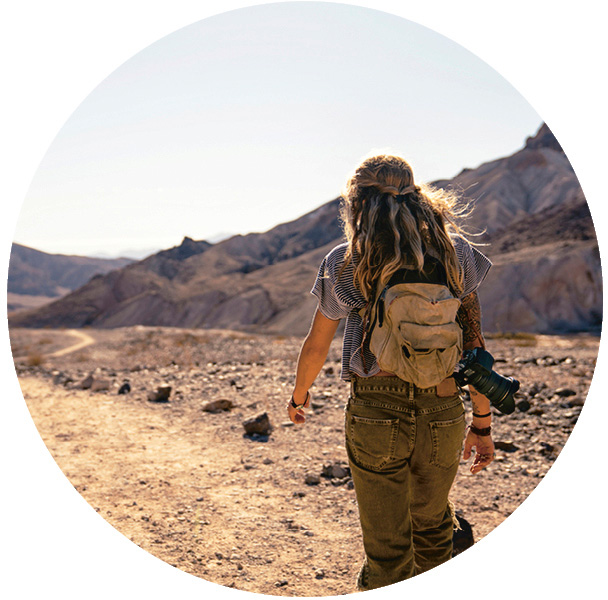
Fall ▷ Warm temperatures and clear skies make perfect camping and hiking weather, so pitch your tent, lace up your boots, and get exploring. For adventurous spirits, the craggy mountains and desert terrain that make up the expansive backcountry beg for a little exploration.
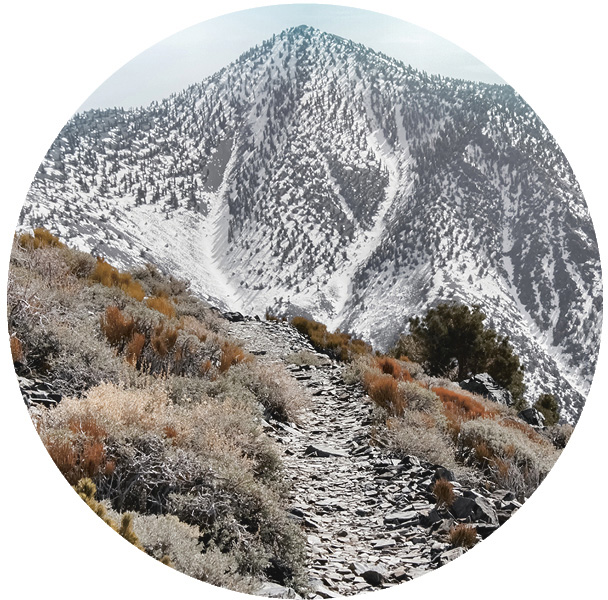
Winter ▷ Cool days and chilly nights come to the valley floor while snow blankets mountain summits in the winter months. The dazzling sight of the low-angled sun streaking the rough hills with long velvet shadows makes for an outstanding photo opportunity.
A rich history
It was the impatience of fortune-seeking pioneers that put Death Valley on the map. When gold was discovered in California in 1848, thousands streamed west. One wagon train set out from Salt Lake City, but several families broke off, seeking a shorter route. The migrants reached Death Valley and wandered through on the brink of starvation. When one group struggled to go on, two men trekked 250 miles (402 km), secured provisions, and returned to rescue the others. Legend has it that as they crossed the mountains, one party member turned back and said, “Goodbye Death Valley.”
While pioneers saw hardship and death, this was a valley of life for the Timbisha Shoshone people who had occupied these lands for centuries. Traversing the valley floor to the mountain ridges offers a glimpse into the seasonal migrations that the Timbisha undertook, hunting game and harvesting pinyon pine nuts between varying elevations. As gold fever continued to spread, mining activity sprang up in Death Valley, forever changing how the Timbisha lived. They did not attain federal recognition until 1983, and received a permanent parcel of land near Furnace Creek only in 2000. The Timbisha now have an active role in making decisions affecting some of their traditional land.

Borax wagons were hauled across the Mojave Desert by the famed 20-mule teams
134
Highest temperature in Fahrenheit (56.7 °C) recorded on Earth at Furnace Creek in 1913.
FOCUS ON
Hollywood Comes to Death Valley
The otherworldly terrain of Death Valley has provided backgrounds for hundreds of movies filmed here—often pinch-hitting for other worlds. Star Wars fans make pilgrimages to Tatooine and other distant planets that were actually Death Valley, a galaxy not so far away. Epics like Spartacus and The Greatest Story Ever Told were shot in and around the park, as well as dozens of Westerns including The Professionals, Django Unchained, and Three Godfathers.
Industrial heritage
Gold and silver lured prospectors back to Death Valley. With each new discovery, towns sprang up. None lasted for long, but in keeping with the park’s haunting name are abandoned ghost towns. If traveling by car, head to Rhyolite, once the largest town in the area and still home to alluring ruins such as a train depot and a jail. Panamint City is as mysterious as it gets, with a chimney of the smelter its most arresting wreckage.
The real wealth of Death Valley lay in the borax deposits on the salt flats. One of the earliest operations was the Harmony Borax Works, which became most famous for their 20-mule team wagons used to transport ore. A ranger-led tour here is a fascinating window into borax history.
A man named Walter Scott worked as a swamper on the 20-mule teams. He later found fame as a con man known as Death Valley Scotty, coaxing investors to sink money into his fictitious gold mine so he could embark on extravagant spending sprees. Businessman Albert Johnson found he was being swindled but didn’t care; he bought a lavish home in Grapevine Canyon, which Scotty then declared as his own. Scotty’s Castle is a highlight of the park, preserving as it does the life and times of the early 20th century.
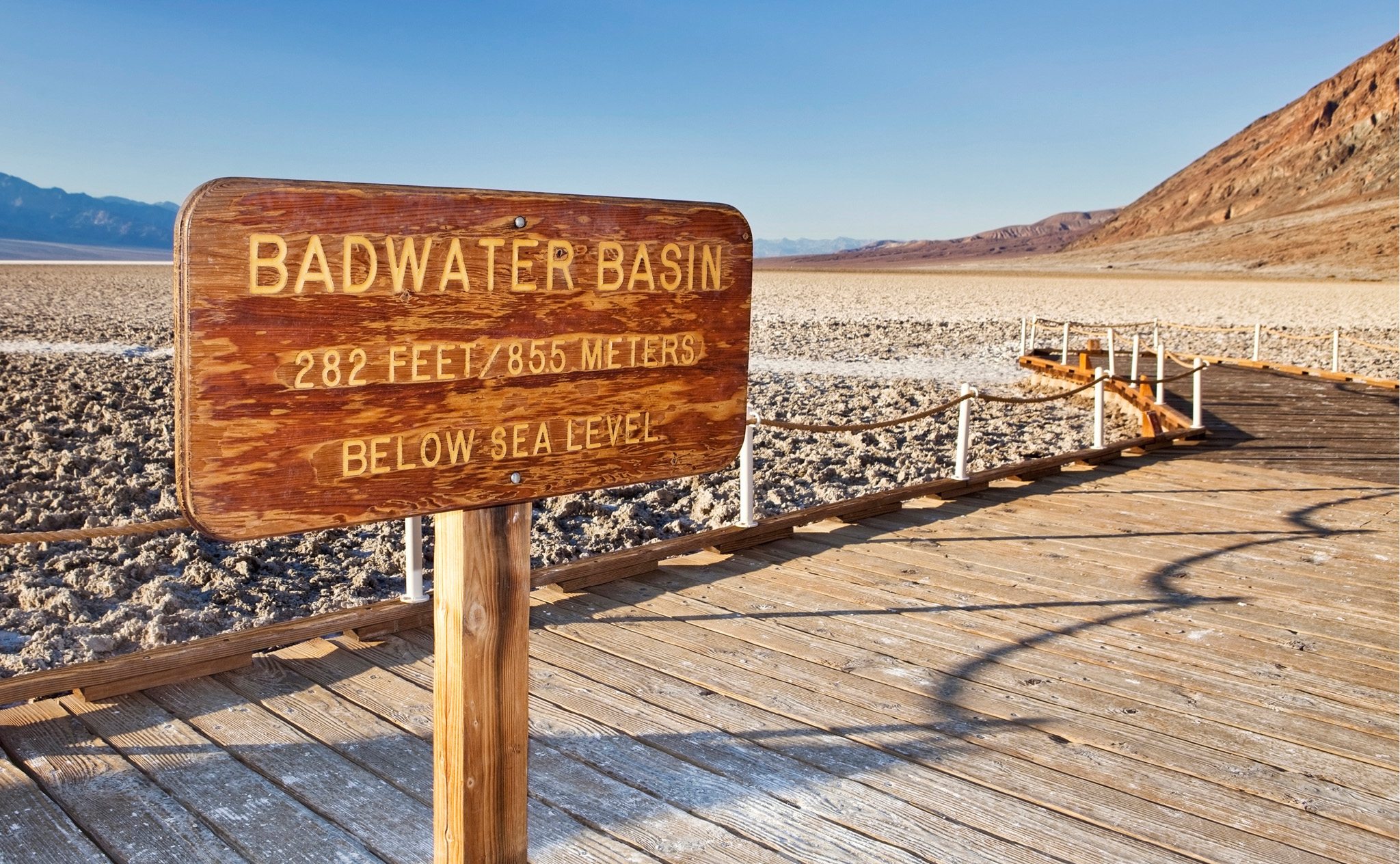
Badwater Basin takes the title as the lowest point in North America, proudly marked on its entry point
The Legendary 20-Mule Teams |
|
|
The discovery of borax was significant, but the largest obstacle was transporting it to a distant railroad. The solution became iconic. From 1883 to 1888, 20-mule teams hauled massive wagons across the terrain. |
|
|
The 20-mule teams actually consisted of 18 mules and two horses at the rear. The horses’ greater strength helped in starting the wagons. |
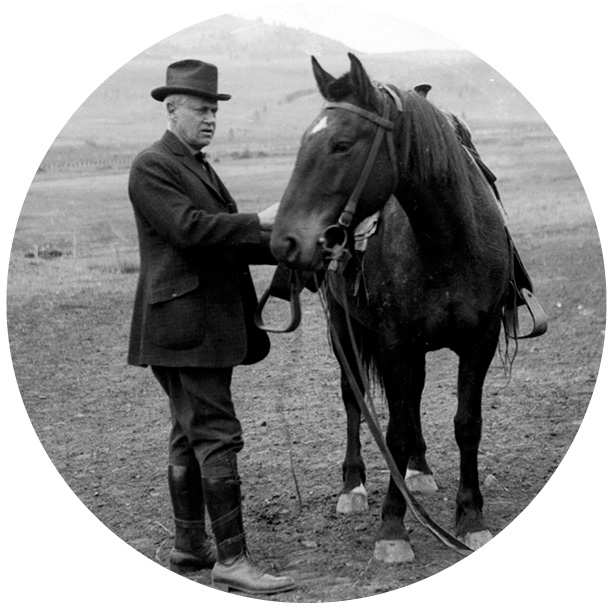
|
|
Three specially built wagons were hitched behind the mules. The first two each held 9 metric tons of borax, and the third hauled water and feed for a load of 33.2 metric tons. |
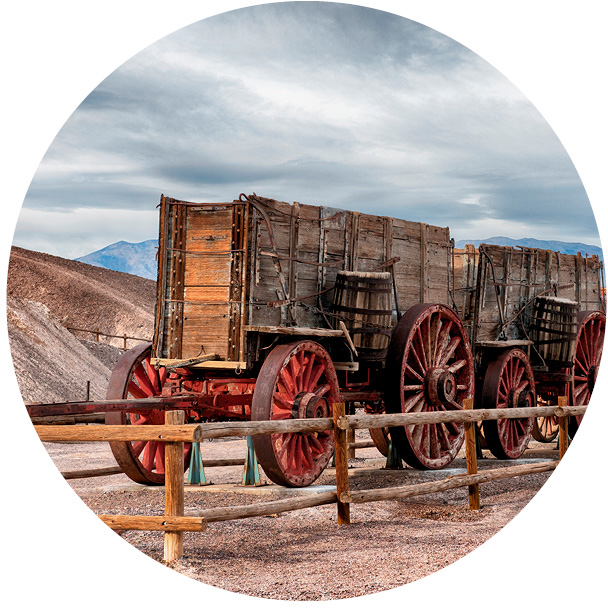
|
|
The muleskinner controlled the team by a jerkline running through the collar of each left-hand mule to the leader 80 ft (24 m) away. He guided the team with pulls. |
|
|
To prevent wagons from overturning on a sharp curve, a few mules in the rear were trained to jump over the chain and pull at an opposite angle. The swamper fed the mules and cooked. |
|
|
The man who had the idea to market a cleaning product as 20 Mule Team Borax was Stephen Mather. He would later become the first director of the National Park Service. |
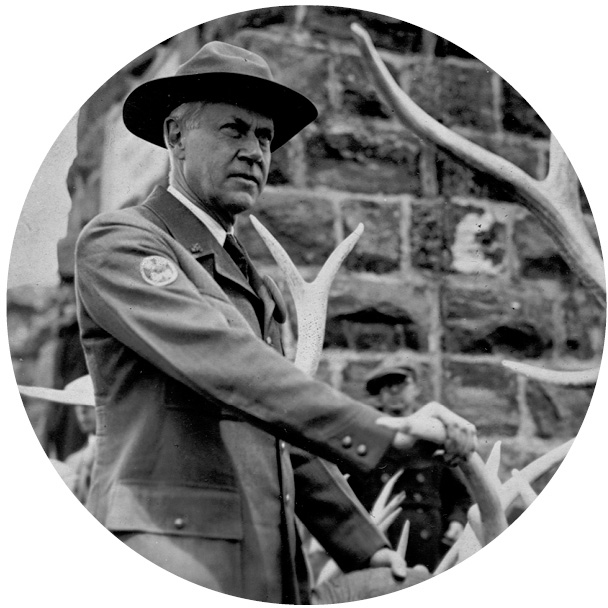
|
|
Death Valley Days, sponsored by 20 Mule Team Borax, was a long-running television program featuring true accounts of the Old West. Past hosts included Ronald Reagan. |
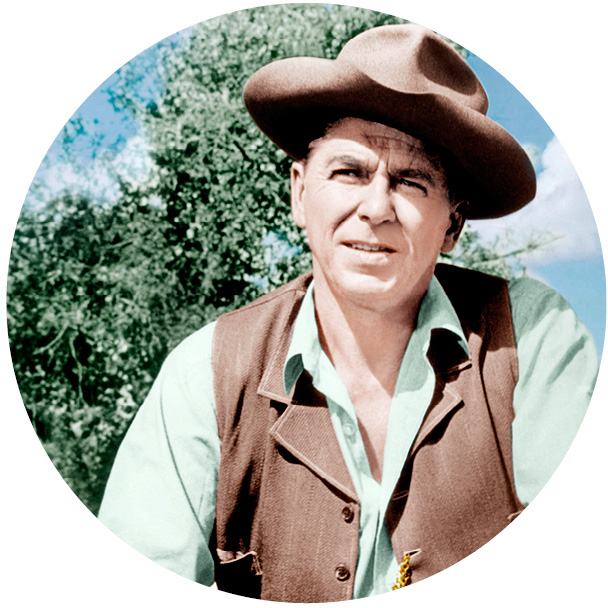
|
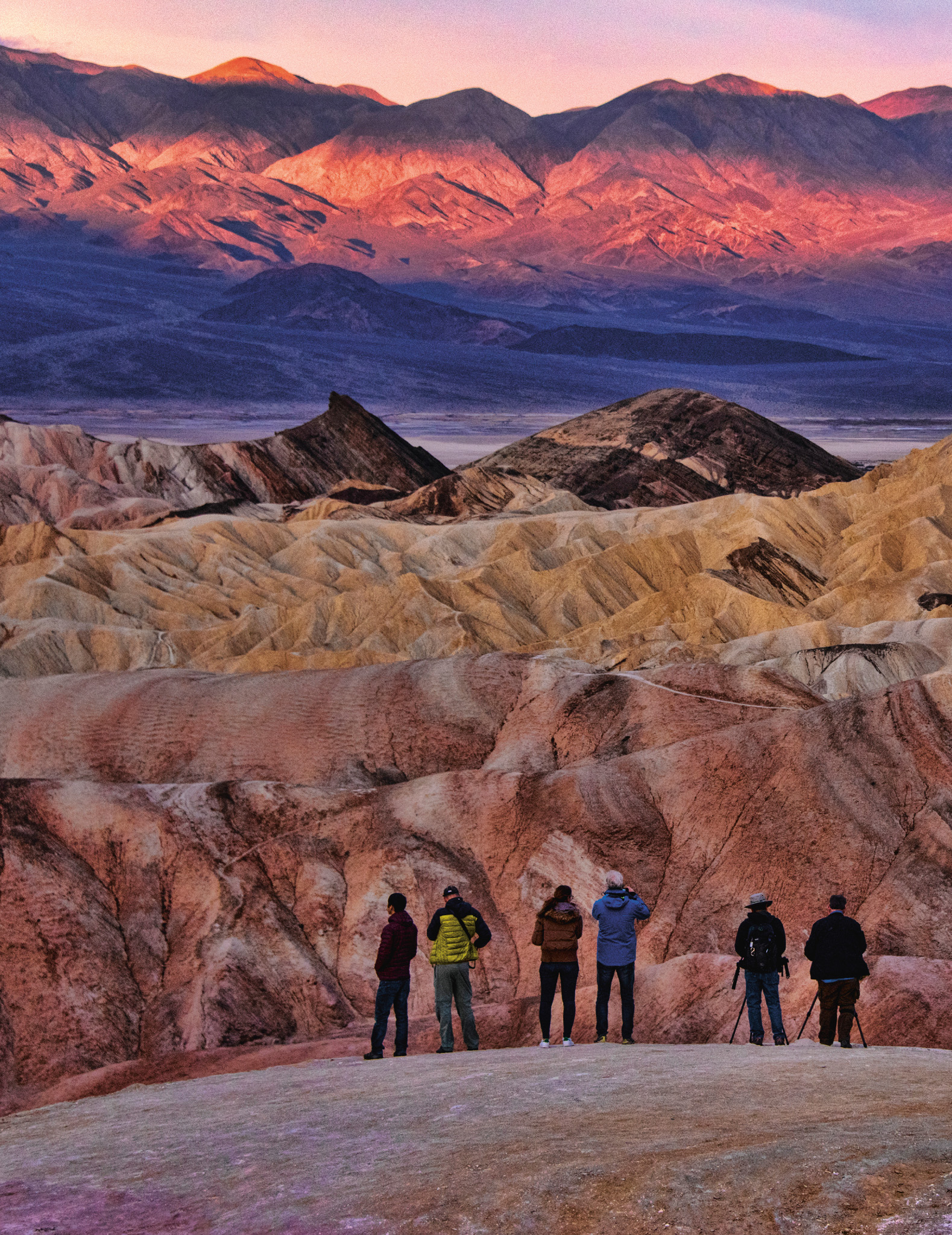
Death Valley brims with photogenic vistas, including Manly Beacon, best viewed from Zabriskie Point
